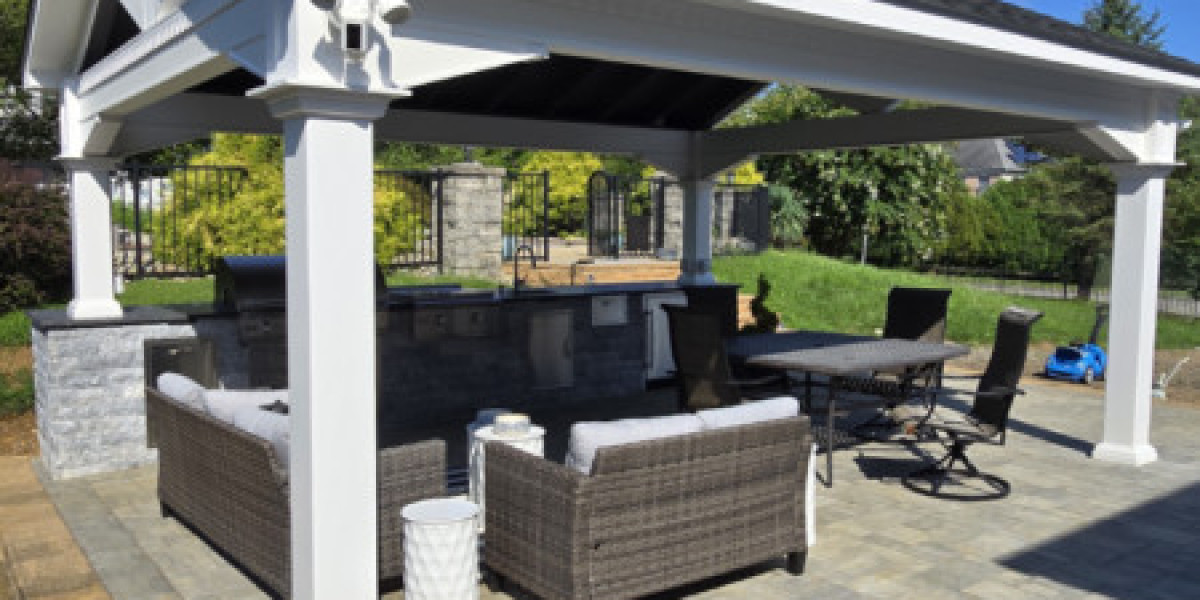An outdoor kitchen is more than just a place to cook; it’s a space for entertaining, relaxing, and enjoying the beauty of your backyard. To make the most of your outdoor kitchen, proper lighting is essential. It not only enhances the aesthetics but also ensures functionality, safety, and a welcoming atmosphere for guests. In this article, we’ll explore the different types of outdoor kitchen lighting, design considerations, and tips for creating a beautifully lit kitchen design outside.
1. Understanding the Importance of Outdoor Kitchen Lighting
Lighting plays a crucial role in the overall design and functionality of your outdoor kitchen. It serves several important purposes:
- Safety: Proper lighting ensures that cooking and dining areas are safe to navigate, reducing the risk of accidents, especially when handling hot surfaces or sharp utensils.
- Functionality: Adequate task lighting is essential for food preparation, cooking, and cleaning up after a meal. Without sufficient lighting, these tasks can become challenging and potentially dangerous.
- Ambiance: Lighting sets the mood and creates a welcoming atmosphere for your outdoor space. Whether you’re hosting a dinner party or enjoying a quiet evening outdoors, the right lighting can enhance the experience.
- Aesthetics: Thoughtful lighting design can highlight the architectural features of your outdoor kitchen, landscaping, and surrounding areas, adding visual appeal to your outdoor living space.
2. Types of Outdoor Kitchen Lighting
To create a well-lit outdoor kitchen, it’s important to incorporate a variety of lighting types that address different needs. Here are the main categories of outdoor kitchen lighting:
- Task Lighting: This type of lighting focuses on areas where specific tasks are performed, such as food preparation and cooking. Task lighting should be bright and directed to illuminate countertops, grills, and sinks. Options include:
- Under-Cabinet Lighting: Installed under upper cabinets or shelves, these lights provide focused illumination for countertops and prep areas.
- Pendant Lights: Suspended above kitchen islands or counters, pendant lights add style while offering concentrated light for tasks.
- Adjustable Spotlights: Mounted on walls or ceilings, these can be directed at specific areas to provide bright, targeted light where it’s needed most.
- Ambient Lighting: Ambient or general lighting provides overall illumination for the outdoor kitchen area. It creates a comfortable level of brightness without being too harsh. Options include:
- Wall Sconces: Installed on walls, these fixtures offer a soft, diffused light that enhances the ambiance.
- Recessed Lighting: Installed in ceilings or overhead structures, recessed lights provide a clean, modern look while ensuring even illumination.
- String Lights: Popular for creating a festive atmosphere, string lights can be draped across pergolas, fences, or trees to add a warm, inviting glow.
- Accent Lighting: Accent lighting highlights specific features of your outdoor kitchen or landscaping, adding depth and visual interest. Options include:
- Landscape Lighting: Used to highlight plants, trees, or architectural features, landscape lighting adds drama and enhances the overall design.
- LED Strip Lights: These flexible lights can be installed under countertops, along the edges of pathways, or around the perimeter of the outdoor kitchen to create a striking effect.
- Pathway Lights: These low-level lights guide guests along walkways, making your outdoor kitchen more accessible and adding to the ambiance.
- Decorative Lighting: Decorative lighting fixtures add personality and style to your outdoor kitchen, serving both a functional and aesthetic purpose. Options include:
- Chandeliers: A chandelier can serve as a focal point over a dining table or seating area, adding elegance to your outdoor kitchen.
- Lanterns: Whether hung from hooks or placed on tables, lanterns provide a charming, rustic touch to your outdoor space.
- Fire Pits and Fire Bowls: While primarily used for warmth, fire pits and bowls also add a beautiful, flickering light that enhances the outdoor ambiance.
3. Design Considerations for Outdoor Kitchen Lighting
When designing your outdoor kitchen lighting, consider the following factors to ensure a functional and visually appealing setup:
- Layering Lighting: Just like in indoor spaces, layering different types of lighting—task, ambient, accent, and decorative—creates a well-balanced and versatile lighting design. This approach allows you to adjust the lighting based on the time of day, the activity, and the mood you want to create.
- Choosing the Right Fixtures: Outdoor lighting fixtures must be durable and weather-resistant to withstand the elements. Look for fixtures with appropriate ratings for outdoor use, such as those labeled as “wet location” or “damp location” fixtures. Materials like stainless steel, brass, and powder-coated aluminum are good choices for outdoor environments.
- Controlling the Lighting: Installing dimmers and smart lighting controls gives you flexibility in adjusting the brightness and creating different moods. For instance, you might want bright lighting for cooking and softer, dimmer lighting for dining or relaxing. Smart lighting systems allow you to control your outdoor lights remotely or set schedules for when the lights should turn on and off.
- Energy Efficiency: Opt for energy-efficient lighting solutions like LED bulbs, which consume less power and have a longer lifespan than traditional incandescent bulbs. LED lights are available in a range of color temperatures, allowing you to choose the perfect hue for your outdoor kitchen.
- Power Sources: Consider the power sources available for your outdoor kitchen lighting. While some lights can be hardwired into your home’s electrical system, others might be solar-powered or battery-operated, offering more flexibility in placement.
4. Tips for Effective Outdoor Kitchen Lighting
To maximize the impact of your outdoor kitchen lighting, keep these tips in mind:
- Balance Functionality and Aesthetics: While it’s important to ensure that your outdoor kitchen is well-lit for cooking and safety, don’t overlook the importance of creating a visually appealing environment. Use lighting to highlight architectural features, create focal points, and enhance the overall ambiance.
- Incorporate Natural Elements: Integrate natural elements like stone, wood, or water features into your lighting design. For example, uplighting a stone wall or illuminating a water feature can create a stunning visual effect.
- Consider Seasonal Changes: As the seasons change, so do the lighting needs of your outdoor kitchen. Plan for different lighting requirements during summer barbecues versus winter gatherings, and consider incorporating features like heaters or fire pits for added warmth and light.
- Test Lighting Before Installation: Before finalizing the installation of your lighting fixtures, test the placement and brightness to ensure they meet your needs. This step can help you avoid unwanted shadows or overly bright areas.
Conclusion
Lighting is a key element in the kitchen design outside. By thoughtfully selecting and layering different types of lighting, you can create a space that is both functional and beautiful, enhancing your kitchen design outside. Whether you’re preparing a meal, hosting a party, or simply enjoying a quiet evening under the stars, the right lighting will make your outdoor kitchen a place you love to spend time in.







